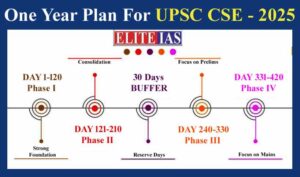
Study Maps for UPSC: In exams like Civil Services, understanding maps is really important. It’s not just a small skill; it’s important for those who want to pass the exam. Maps aren’t just pictures; they help us understand things like countries, history, and what’s happening now. So, it’s really necessary to be good at studying maps if you want to be an IAS officer. UPSC classes in Delhi makes it interesting to learn, but here too you will find it engaging and effective.
The Significance of Maps: Understanding Their Importance
It’s crucial for candidates to understand why maps are important and how they help you understand things better and think critically. Maps are not just pictures; they’re tools that can help you see and understand different aspects of geography. For example, a map can show you where mountains, rivers, and forests are (Physical Geography), where cities and towns are (Human Geography), where resources like oil and minerals are found (Economic Geography), and how things like climate change affect different regions (Environmental Geography).
By studying maps, candidates can develop a clearer understanding of geographical concepts and improve their ability to analyze information.
Strategies for Effective Map Study
Start with Basics:
If you’re new to maps, it’s important to begin with the basics. First, get to know the different types of maps. There are political maps that show borders and cities, physical maps that display natural features like mountains and rivers, and thematic maps that focus on specific themes like population or climate.
Practice reading coordinates, which are like the map’s address, telling you exactly where something is located. Also, learn how to interpret geographical features. For example, if you see a blue area on the map, it might represent water like a lake or a river. If you see lots of green, it could be forests or other vegetation.
By starting with these basics, you’ll build a solid foundation for understanding and using maps effectively. Whether you’re studying geography for school or exploring the world around you, knowing how to read and interpret maps is an important skill that can help you navigate and understand the world better.
Utilize Authentic Resources:
When you’re preparing for the UPSC exam, it is important to have maps that are accurate and detailed. To get the best maps, use authentic resources. That means relying on sources that are trustworthy and precise.
One great place to find good maps is in atlases. These are books or online resources filled with maps of different places. Another option is textbooks that cover geography. These often have maps that are relevant to what you’re studying.
You can also find maps online, but make sure you’re using ones from reliable institutions. Look for maps provided by well-known organizations or educational websites.
One highly recommended resource is the atlas from the National Council of Educational Research and Training (NCERT). This atlas is known for being really thorough and accurate. It covers a lot of different areas and provides detailed maps that can be helpful for your UPSC preparation.
By using authentic resources like atlases, textbooks, and online IAS coaching materials from reputable sources, you’ll have access to maps that you can trust. And when it comes to studying for the UPSC exam, precision and accuracy are key. So, make sure you’re getting your maps from the best sources possible.
Focus on Key Locations:
When you’re studying for the UPSC exam, it’s smart to pay close attention to certain important places. These are the key locations that are relevant to what you’ll be tested on. This includes countries, their capitals, big cities, rivers, mountains, seas, and oceans.
But don’t just memorize names! Think about why these places matter. Some places are important because of politics—they might be capitals or cities where big decisions are made. Others are important because of history—they might be sites of famous events or ancient civilizations. And some places are important because of the environment—they might be regions with unique ecosystems or areas affected by climate change.
By focusing on these key locations and understanding why they’re important, you’ll get a better understanding of what’s happening in the world. You’ll be able to connect global events to specific places, see how history has shaped different regions, and understand why certain issues matter.
So, when you’re studying for the UPSC exam, take the time to map out these key locations. It’ll help you see the big picture and make connections between different parts of the world.
Practice Map-Based Questions:
If you want to get really good at reading maps for the UPSC exam, practice is most important. Make sure to include map-based questions in your study routine.
One great way to practice is by solving questions from previous years’ exams. This will give you a good idea of the kinds of map-based questions you might encounter on the actual test. You can also try doing UPSC mock test that include map questions. This helps you get used to answering them under timed conditions, which is important because you’ll have a limited amount of time during the real exam.
Practicing map-based questions not only helps you improve your map-reading skills, but it also makes you better at answering questions accurately and quickly. This is really important because you’ll need to be able to find the right information on the map and answer the question correctly within the time limit.
So, don’t forget to include map-based questions in your study routine and make sure to practice regularly. The more you practice, the more confident you’ll become in your map-reading skills, and the better prepared you’ll be for the UPSC exam.
Integrate Current Affairs:
To really excel in map study for the UPSC exam, it’s important to keep up with what’s happening in the world right now. This means staying updated with current affairs and connecting them to your map study.
When you’re looking at maps, think about how they relate to recent events. For example, if there’s been a big change in the political situation in a certain region, think about how that might be reflected on a map. Or if there’s a new environmental issue making headlines, consider how it could affect the geography of a particular area.
By integrating current affairs into your map study, you’ll be able to understand the bigger picture. You’ll see how maps are connected to real-life events and issues. This can help you contextualize map-based questions on the UPSC exam and formulate more informed opinions.
So, make sure to stay updated with what’s happening in the world, and think about how it relates to the maps you’re studying. This will not only improve your map-reading skills but also help you develop a deeper understanding of global issues.
Visualize Concepts:
To grasp geographical concepts better, use maps as visual tools. When studying topics like different climatic regions, where plants grow, or where people live, mapping them out can make these concepts clearer.
Try creating visual aids like mind maps, flowcharts, or diagrams. These tools help reinforce your understanding of complex geographical ideas. For example, you can draw a map showing where hot deserts are located, or you can make a diagram illustrating how population is distributed across a country.
Visualizing concepts through maps not only helps you remember information better but also makes it easier to understand how different factors interact in the real world. So, when you’re studying geography, don’t forget to use maps and visual aids to bring those concepts to life!
Revision and Retention:
To remember what you’ve learned, it’s important to revise regularly. Make sure to include map study in your revision routine. Review maps often to help reinforce your memory and make sure you remember important information.
Use techniques like mnemonic devices and visualization to help remember complex details. For example, you could create a catchy phrase or image to remember the names of countries or rivers. This makes it easier to recall them later when you need to.
By incorporating map study into your revision schedule and using memory aids, you’ll improve your retention of geographical information. This will help you feel more confident and prepared when it comes time to take the UPSC exam. So, make sure to review those maps regularly and use tricks to help you remember what you’ve learned!
Seek Guidance:
If you’re struggling with map study, don’t hesitate to ask for help. Seek guidance from mentors, teachers, or other people preparing for the UPSC exam. You can join study groups or online forums where map study is a focus.
Engage in discussions with others, share your insights, and listen to what others have to say. You’ll learn from their perspectives and experiences. Collaborative learning like this helps you understand maps better and improves your map-reading skills.
By seeking guidance and learning from others, you’ll gain a deeper understanding of geography. Plus, you’ll feel more confident and prepared for the UPSC exam. So, don’t be afraid to reach out and ask for help when you need it!
Thus, mastering map study is indispensable for UPSC IAS aspirants. It goes beyond memorizing locations; it entails understanding geopolitical dynamics, historical contexts, and contemporary issues. By following above tips, aspirants can enhance their map-reading skills and excel in the UPSC Civil Services Examination. Remember, proficiency in map study is not just a skill, but a gateway to success in the journey towards becoming an IAS officer.





